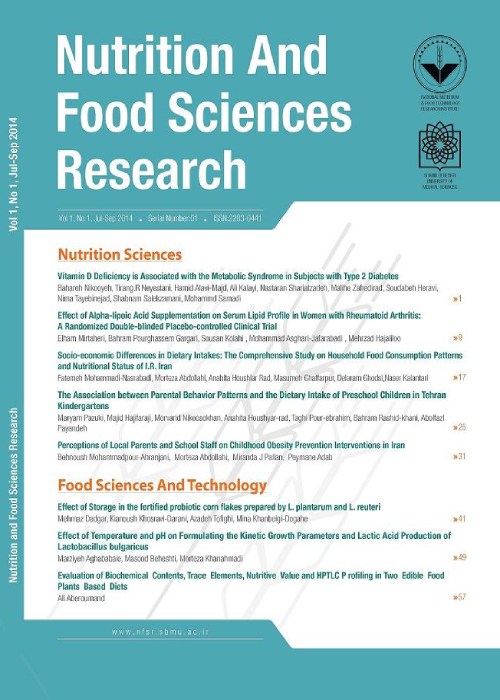Do Iranian Female-headed Households Have Lower Socio-economic and Nutritional Status Compared to Male-headed ones?
Author(s):
Abstract:
Background And Objectives
Poverty and risk of nutritional vulnerability of female-headed households (FHHs) are usually higher than male-headed households (MHHs). This study aimed at comparing the socio-economic status, and food and nutrient intake of FHHs and MHHs based on the data from Comprehensive Study on Household Food Consumption Patterns and Nutritional Status of Iran (2001-2003). Materials And Methods
In this cross-sectional study, the samples were urban and rural households of the country, which were determined by the Statistics Center of Iran using systematic cluster method. The socio-economic and demographic characteristics of households were asked by interview and observational techniques, and recorded in data forms. The dietary data were collected using three consecutive 24-hour recalls completed by nutrition experts. For the purpose of this study, FHHs and MHHs were compared in terms of socio-economic characteristics, consumption pattern and nutritional status. Results
From 7158 households of the study, 5.5% were female-headed including 116 rural (1/6%) and 280 urban (3.9%) households. Educational and occupational status among FHHs were significantly lower than among MHHs (p<0.05); however, in terms of average total expenditure per capita, accommodation type, and lodging facilities such as electricity and water consumption, no significant differences were observed between FHHs and MHHs. In contrast, MHHs enjoyed more facilities. The significant difference in food consumption among the urban households was only found in fruits and sweets, and in the rural areas, in oils and fats group (p<0.05). In FHHs, calcium, Vitamin C and thiamin intake was lower than in male-headed group. In the rural areas, the retinol and energy intake posted a lower and higher level, respectively, over MHHs (p<0.05). Conclusions
In spite of lower socio-economic level among FHHs, the differences in food and nutrient intake were only seen in fruits, calcium, Vitamin C and retinol intake, especially in the rural areas. Therefore, in the diet of these households, energy dense foods should be partly replaced by foods providing nutrients such as Ca, Vitamin C and retinol.Keywords:
Language:
English
Published:
Nutrition & Food Technology Research, Volume:2 Issue: 2, Apr-Jun 2015
Pages:
13 to 22
magiran.com/p1392733
دانلود و مطالعه متن این مقاله با یکی از روشهای زیر امکان پذیر است:
اشتراک شخصی
با عضویت و پرداخت آنلاین حق اشتراک یکساله به مبلغ 1,390,000ريال میتوانید 70 عنوان مطلب دانلود کنید!
اشتراک سازمانی
به کتابخانه دانشگاه یا محل کار خود پیشنهاد کنید تا اشتراک سازمانی این پایگاه را برای دسترسی نامحدود همه کاربران به متن مطالب تهیه نمایند!
توجه!
- حق عضویت دریافتی صرف حمایت از نشریات عضو و نگهداری، تکمیل و توسعه مگیران میشود.
- پرداخت حق اشتراک و دانلود مقالات اجازه بازنشر آن در سایر رسانههای چاپی و دیجیتال را به کاربر نمیدهد.
In order to view content subscription is required
Personal subscription
Subscribe magiran.com for 70 € euros via PayPal and download 70 articles during a year.
Organization subscription
Please contact us to subscribe your university or library for unlimited access!



